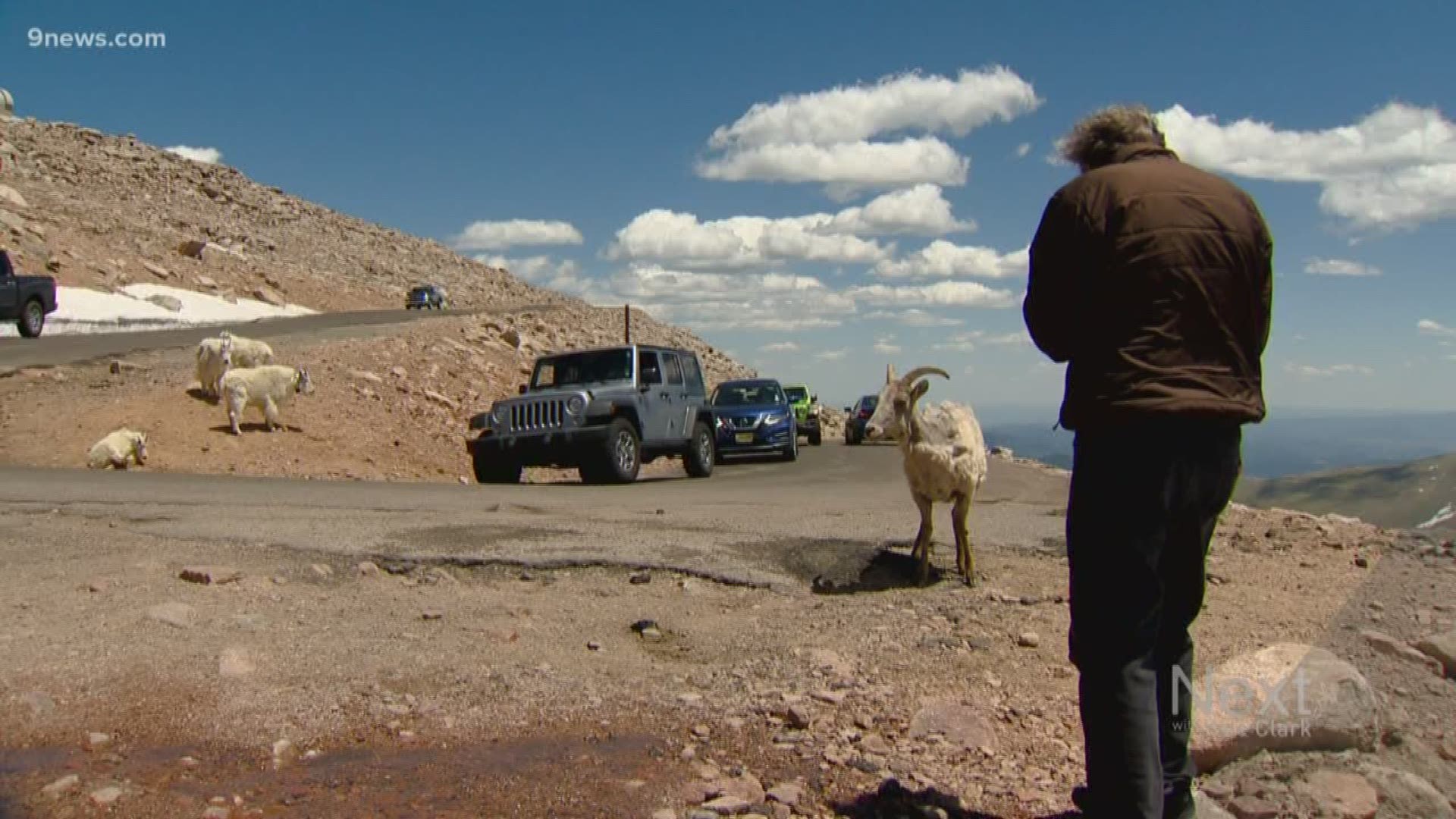DENVER — Colorado Parks and Wildlife (CPW) wants to remind visitors to Mount Evans this summer to refrain from feeding any wildlife they encounter and to keep a safe distance from them.
Recently, the agency has noticed a troubling pattern with how visitors, who ascend to the top of the popular 14er by way of the Mount Evans Scenic Byway, are interacting with the wildlife that lives there.
Wildlife staff said they've observed an increasing trend in habituated mountain goat and bighorn sheep behavior which, according to CPW, is likely a result of people feeding wildlife or getting too close to them while taking pictures.
CPW said the most concerning unnatural habits witnessed during the 2018 season included wildlife licking vehicles for the salt on them, putting their heads inside open car windows, running toward the sound of food wrappers, entering restrooms and tolerating large groups of people surrounding them to take photos from unsafe distances.
“People have gone as far as attempting to pick up mountain goat kids and we have seen groups of mountain goats surrounding and following people, which is far beyond the natural behavior of these animals,” Wildlife Officer Joe Nicholson said.
Last week, a CPW videographer captured footage of a mountain goat climbing onto the hood of an SUV and walking around for a few moments before jumping down.
In an effort to discourage animals from approaching visitors and cars, CPW has introduced a series of hazing tactics aimed at reinstating a natural fear of humans, Some of those tactics include sound and direct contact from tasers, cattle prods, paintball guns and employing a K9 Samson to haze offending animals away from visitors and their cars, CPW said.
“We have growing concerns over the health and well-being of mountain goats and bighorns that come into contact with human and domestic waste both at restrooms and along heavily used trails,” said Lance Carpenter, a wildlife biologist with CPW.
Volunteer crews with CPW will also be stationed at the summit of Mount Evans this summer to educate people about the animals they may encounter and help disrupt any improper behavior (like feeding wildlife or taking selfies with them).
The end goal, according to CPW, is to reduce the interactions between wildlife and humans on the mountain, which will make for a healthy wildlife population overall.
RELATED: 'I think we’re right on the verge:' Couple who rehabs fawns says wildlife needs more resources
SUGGESTED VIDEOS | Feature stories from 9NEWS

